Oregano (oregano, motherboard)

The birthplace of oregano is the Mediterranean. It is here that this spice has found the widest use and love of many inhabitants of this region. Oregano enjoys no less love among the inhabitants of Mexico. In another way, it is also called "Oregano" and "Motherinka".
Oregano subspecies - marjoram - found in Russia in the wild. Very often, oregano is called wild marjoram, but this is not entirely true. These plants are close relatives and belong to the same family of Lamiaceae, Labiatae.
Oregano is widely distributed in our country and has been used since ancient times to give a unique flavor to dishes and drinks. In addition, this healing herb is the main component of many traditional medicine recipes.
In different languages of the world "oregano":
- Echter Dost, Wilder majoran - in German;
- organy, wild marjoram - in English;
- origan, origan vulaire - in French:
- organum vulgare - in Latin.

Appearance
Oregano is a low (about 60 cm) plant, with a straight, tetrahedral reddish stem and oval leaves on cuttings. The flowers are small, about two centimeters in diameter, pink or lilac, collected in fluffy umbrellas. In August, the plant fades and seeds ripen.
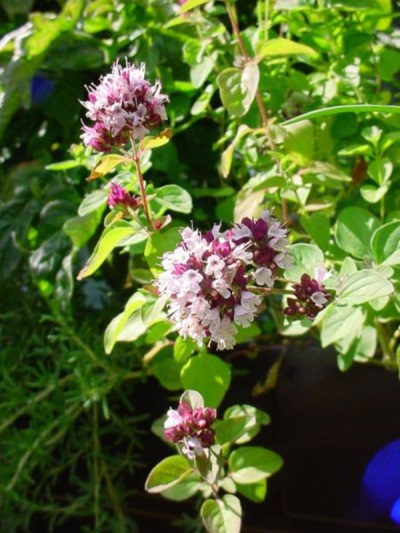
Kinds
- common oregano (marjoram) - has reddish stems. Green leaves can be up to 4 cm long. Their shape is ovate-oval, they are pointed at the ends.It blooms with pink flowers about 2 mm, which appear in panicles with burgundy bracts.
- Greek - this species is winter-hardy, it has round leaves covered with fluff and white inflorescences. Reddish stem. Grows up to 25 cm tall. Blooms with small white flowers. It has a rich aroma and peppery-spicy taste;
- Golden - this species is characterized by bright, yellow-green leaves and a faint aroma;
- small-leaved - this species has small leaves and a softer, fresher taste;
- Kyrgyz and Turkish - Distinctive features are a red stem and a less spicy taste than the rest. Their taste and aroma contain fruity notes. Pink flowers are collected in inflorescences;
- Syrian - has a sharp, tart-spicy aroma;
- mexican - has a pronounced taste and aroma. This plant can be distinguished by its serrated-edged leaves and white flowers;
- Cuban - this species is characterized by an intense peppery taste and aroma.
- decorative - often used for growing in flower beds.

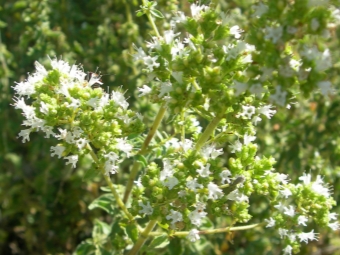




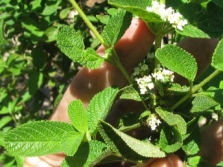
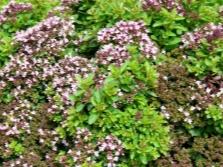
Where does it grow?
It grows wild in Europe and the Mediterranean. In the USA and France, this plant is cultivated, grown on an industrial scale. Oregano most often grows in open areas where there is a lot of sunlight - in fields, forest edges, river banks and hillsides.

Preparation method
Oregano begins to be harvested during the flowering period, that is, from the second half of summer. In cooking and medicine, only the herbaceous parts of this plant are used - the tops with leaves. The grass is cut about 20 cm from the ground, tied into bunches or laid out in a thin layer and dried in a well-ventilated area, such as an attic or a summer veranda.

Characteristics
- spicy, tart aroma;
- sharp, slightly bitter taste;
- dark green color.
Nutritional value and calories
Nutritional value and calorie content of 100 gr. dry product
| Squirrels | Fats | Carbohydrates | calories |
|---|---|---|---|
| 11 gr. | 10.25 gr. | 21.63 gr. | 306 kcal |
You can learn more about the beneficial properties of oregano by watching the video from the program "Live Healthy!"
Chemical composition
Chemical composition per 100 grams of dry product
| vitamins | Micro and macro elements | ||
|---|---|---|---|
| beta carotene | 4.112 mg | Calcium | 1576 mg |
| Vitamin A | 365 mcg | Magnesium | 270 mg |
| Vitamin B1 | 0.341 mg | Sodium | 15 mg |
| Vitamin B2 | 0.32 mg | Potassium | 1669 mg |
| Vitamin B6 | 1.21 mg | Phosphorus | 200 mg |
| Vitamin B9 | 274 mcg | Iron | 44 mg |
| Vitamin C | 50 mg | Zinc | 4.43 mg |
| Vitamin E | 18.86 mg | Copper | 943 mcg |
| Vitamin K | 621.7 mcg | Manganese | 4.667 mg |
| Vitamin PP | 6.22 mg | Selenium | 5.9 mcg |
| Choline | 32.3 mg |
Beneficial features
- has an expectorant effect;
- removes excess fluid from the body;
- soothes and relaxes;
- relieves inflammation;
- disinfects;
- relieves pain;
- has a hemostatic effect;
- has a choleretic effect;
- regulates metabolism;
- normalizes appetite;
- is a laxative.

You can learn more about the benefits of oregano in the following video.
Harm
- it is strictly not recommended to use oregano for pregnant women, as this plant can cause uterine contractions and provoke a miscarriage;
- some doctors advise men not to abuse oregano, as this can lead to problems with potency;
- you can not use oregano if an allergy to this herb has been noticed;
- people with diseases of the cardiovascular system and stomach should also refuse treatment with drugs that contain this plant.
Oil
The essential oil obtained from oregano is an excellent antiseptic. It is used both internally and externally as an aid in the fight against bacterial and fungal infections. Also, oregano oil can be used to treat colds, for massage, as well as to eliminate pain and burning on the skin and mucous membranes.

Application
In cooking
- in Russia, oregano is traditionally used to brew aromatic tea;
- in Russian cuisine, they also add to the filling of pies and other pastries to give it a spicy flavor;
- Italians like to sprinkle oregano on pizza, achieving a unique taste and aroma;
- the plant goes well with champignons;
- in European countries it is often used to flavor sausages;
- oregano is usually used as a seasoning for meat, in combination with other spices;
- often added to jars of pickles and marinades;
- spicy sauces and gravies are made on its basis.



Recipes
Neapolitan sauce
Prepare a large saucepan and heat 2 tbsp. olive oil. Finely chop one onion, chop the head of garlic and fry in oil for 7 minutes.
Then add 1 tbsp to the pan. oregano, 800 grams of chopped canned tomatoes, 2 tbsp. spoons of tomato paste and 1 tbsp. Sahara.
Remove the skin and seeds from 4 tomatoes, chop them and put them into the cooking sauce. Sweat for 2 minutes. Salt and pepper. Before serving (or adding to a dish), put half a cup of chopped anchovies and 2 tbsp. black olives.

Olives with oregano and garlic
Ingredients:
- Kalamata olives - 1 cup
- dried oregano - 1 heaping teaspoon
- olive oil - 1 teaspoon
- balsamic or wine vinegar - to taste
- garlic - 3 cloves
Pass the garlic through a press.In a small bowl, mix: oil, vinegar, oregano and garlic. Add olives to the marinade, mix everything well and leave to marinate for at least half an hour.
By marinating olives in this way, you will discover a whole new palette of taste sensations. You can also pickle regular green olives.

In medicine
Due to its medicinal properties, oregano can be used as an adjuvant in the treatment of a number of diseases:
- violation of intestinal motility;
- pain in the stomach;
- intestinal colic;
- liver disease;
- jaundice;
- bronchitis;
- whooping cough;
- pain during critical days;
- violation of the menstrual cycle;
- hypersexuality;
- convulsions;
- epilepsy;
- paralysis;
- rheumatism;
- migraine;
- hypertension;
- boils and abscesses.
Essential oil and decoction of oregano can be taken orally, and also used as lotions, rinses and douches.
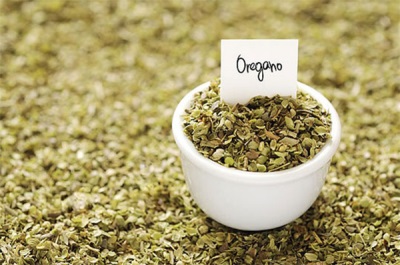
Oregano has a strong healing effect and can be compared with some antibiotics in terms of effectiveness. Scientists have proven that it is more effective than penicillin, streptomycin and a number of other well-known drugs.
Calming tea
Pour 3 tbsp into an iron kettle or small saucepan. dry, crushed oregano. Pour half a liter of water and cook over medium heat for 2 minutes. Then tightly wrap the container in a towel and let the broth brew for half an hour. Drink warm with cream. Can be diluted with water if desired.
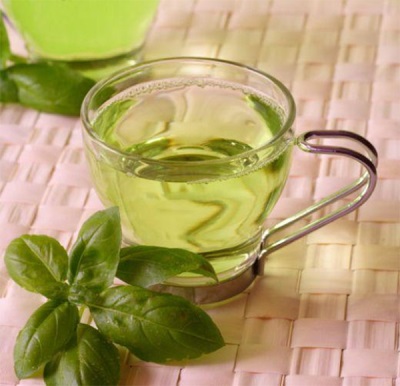
When losing weight
Regular use of oregano helps to get rid of constipation and improve the functioning of the biliary tract. That is why, people who want to lose weight should include oregano as a condiment in their diet. Herbal preparations that contain oregano also help well.

cultivation
seed germination
If you plant oregano seeds in March, and grow seedlings in the warmth, then the plant will bloom this year.
Ordinary plastic containers are suitable for germinating seeds.
- Fill the container with soil (don't forget to add some sand), lightly dampen and compact.
- Make holes or grooves in the soil and place the seeds in them.
- Sprinkle with earth, sprinkle again with water and cover the container with a dense but transparent material, such as glass or polyethylene.
- Periodically ventilate and moisten the soil.
- When the sprouts hatch, remove the lid.
- After the first few leaves appear on the sprouts, plant them in separate containers.
- Water the seedlings as the soil dries out.
Watch the following video for instructions on how to plant shoin to grow oregano seedlings.
Landing and care
In May, you can plant seedlings in a permanent place. Oregano needs moderate watering, loose soil and periodic top dressing. From time to time you need to get rid of weeds.
Every five years, oregano bushes are recommended to be transplanted to a new place.
If in the first year of a plant's life the inflorescences are cut off before they bloom, in subsequent years the plant will be more magnificent, and the harvest will be more abundant.

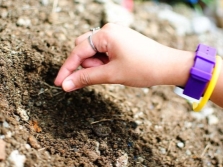

At home
Oregano can also be grown at home on the windowsill. Watch the next video. It provides a step-by-step process for planting oregano at home.
Interesting Facts
- In the old days, wives gave their husbands a decoction of oregano to drink in order to reduce their sexual desire and, thereby, protect them from adultery.
- Oregano is the most valuable source of vitamin C. This plant contains even more of it than orange.



















I really love to add oregano to pizza - it turns out very fragrant!